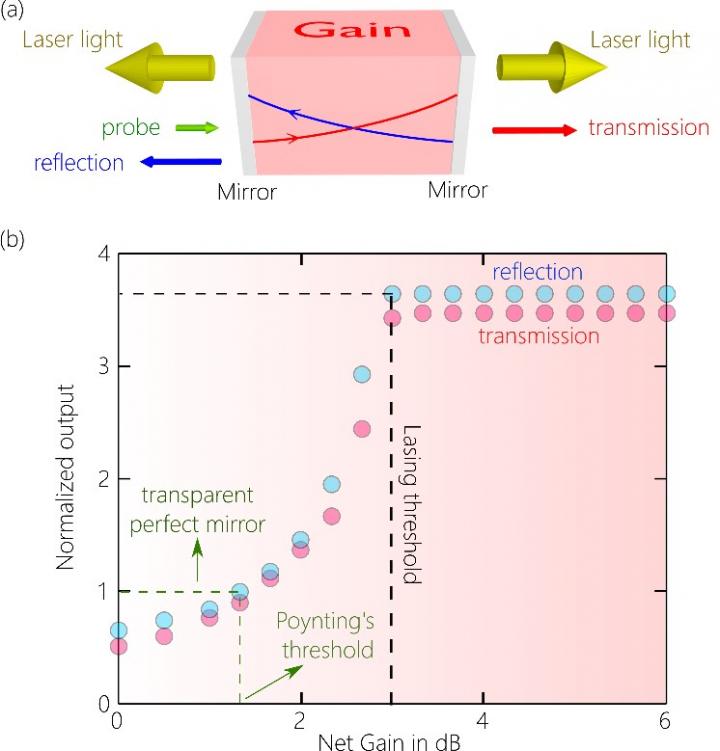
Laser Cavity Reveals Fundamental Physics Driving Its Optical Responses
ORLANDO, Fla., Sept. 1, 2017 — The optical response of an externally probed laser cavity was monitored before and after gain clamping to reveal the underlying mechanisms of the cavity’s response. The research provided a unique window into fundamental physics and optical behaviors.
For the experiments, researchers used a fiber optic cavity in which they separated the forward and backward traveling light. When they closely investigated the dynamics of directional energy flow in the cavity as gain was increased, what they found related to fundamental physical principles and offered a direct view of the role of causality.
To study how externally incident light interacts with an active laser cavity in quantitative detail, researchers from the University of Central Florida (UCF) and Yale University developed a perfectly reflecting one-way mirror, offering truly concealed observation windows.

A lasing cavity is probed with an external signal (a). Measured reflection from and transmission through the cavity as a function of gain, showing an increase until lases commences followed abruptly by clamping (b). The device becomes a transparent perfect mirror. Pre-lasing gain value: reflection in 100 percent but the transmission is finite. Courtesy of Ayman Abouraddy, University of Central Florida's CREOL.
“We’ve been looking at what would happen if I send a beam of light through . . . a cavity with gain inside as I gradually crank up the amount of gain. We’re studying what happens to light that is sent through a cavity if the cavity is active,” said UCF researcher Ayman Abouraddy.
Researchers found that when they changed the amount of gain, the cavity’s optical response to a separate incident laser, of a different wavelength, also changed. The reflection and transmission changed measurably, depending on the active gain level of the cavity.
“As we increase the amount of gain, the cavity will lase on its own. For our research today, we are more interested in what happens to a signal that I am sending through that cavity,” he said.
When the cavity begins to lase, a shift in its behavior occurs. Both reflection and transmission amplification top out, although the power of the probing signal remains linearly related to the output.
“The cavity is not allowed to amplify beyond a certain limit after you hit lasing,” said Abouraddy.
This effect, known as gain clamping, is essential to stable functioning of the laser. However, a similar response to externally incident light offers new insight into fundamental physics.
Abouraddy said that at sufficient gain, as light makes trips in the cavity in both directions, a null in the energy flow where the two directions cancel gradually creeps deeper into the cavity. The behavior of this null links a laser's fundamental threshold to a direct demonstration of causality's limits.
“At the lasing threshold, that null reaches midway in the cavity. It turns out increasing the gain further, that null refuses to move ahead, and it's pinned to the middle of the cavity,” Abouraddy said. “That is why when we increase the gain, we don’t see further amplification.
“. . . If that null were to move further beyond the midway of the cavity," Abouraddy continued, "(it) would be a violation of causality. In this case, one would get an output from it before you sent an input."
The research was published on the OSA web site. The presentation entitled Gain-Clamping for an Externally-Incident Field Passing through a Laser Cavity will take place on September 19, 2017, at Frontiers in Optics at the Washington Hilton, Washington, D.C. Frontiers in Optics Laser Science APS/DLS (FiO+LS) is The Optical Society's (OSA) Annual Meeting.
Published: September 2017